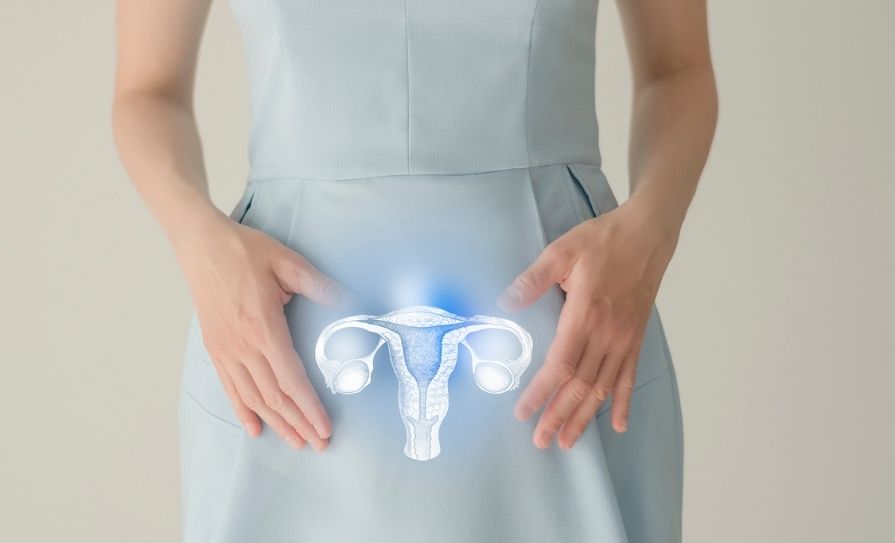Eamonn Brady MPSI looks at the various ways patients can be helped to kick the habit for good
What is in cigarettes that makes them so harmful? Tobacco smoke produced by cigarettes contains over 4,000 chemicals, many of which are harmful. These include:
Nicotine
- Nicotine is one of the most addictive substances in the world. Scientists have argued that it may be more addictive than heroin or cocaine.
- Nicotine is poisonous and has been used in the past as an insecticide.
- It is inhaled into the lungs, passes into the bloodstream, and reaches the brain in about 10-to-20 seconds.
- Nicotine addiction can occur quickly, and it is because of this that smokers continue to smoke.
- Nicotine can affect mental health, such as making a smoker anxious and affecting their quality of sleep.
Tar
Tar is a sticky substance that collects in the lungs, causing respiratory diseases like COPD and cancers.
Carbon monoxide
Carbon monoxide is a poisonous gas which limits the amount of oxygen that the red blood cells in our bodies can carry.
Other chemicals
There are over 4,000 other chemicals in cigarettes, many of which are cancer-causing. These include arsenic (poison), ammonia (toilet cleaner), acetone (nail polish remover), butane (lighter fuel), methanol (rocket fuel),
DDT (insecticide), polonium 210 (radioactive fallout) and cadmium (car battery fuel).
Reasons smoking causes premature death
Cancer
As well as lung cancer, smoking can cause cancer of the throat, oesophagus, bladder, kidney, stomach, and pancreas.
Cerebrovascular disease
The arteries that supply blood to the brain can be damaged by smoking. This can lead to various health problems, including heart failure due to a lack of oxygen.
Pneumonia
Smoking can cause pneumonia. Pneumonia is a potentially fatal infection which causes inflammation of the lungs.
Chronic (long-term) health problems
Smoking can cause many long-term health problems, including:
?
- Angina — chest pains caused by a lack of oxygen to the heart.
- Peripheral vascular disease- damaged blood vessels.
- Macular degeneration — breakdown of the retina, causing gradual blindness.
- Impotence
- Infertility — in both men and women.
- Osteoporosis
- Skin wrinkling
Risks of smoking during pregnancy
Smoking can reduce fertility, hence reducing the chances of conceiving. Smokers have a greater chance of complications occurring during pregnancy and labour, such as sickness, miscarriage, and bleeding. Smoking while pregnant can also increase the risk of premature birth and stillbirth. A baby may have a lower birth weight, be weaker, and grow more slowly throughout their childhood.
Smoking and Covid-19 risk
The World Health Organisation (WHO) has completed an analysis of 35 peer-reviewed studies on the association of smoking with Covid-19. The review found that smokers are more likely to develop severe disease from Covid-19 than non-smokers, and in hospitalised patients with Covid-19, smoking was also associated with increased severity of illness and death. A smaller study, quoted by Public Health England (PHE) in response to the findings, suggested that smoking was a significant predictor of disease severity, with smokers being 14 times more likely to develop severe respiratory disease than non-smokers.
People who quit smoking before the age of 35 have a life expectancy only slightly less than people who have never smoked
Health benefits from the moment smoking stops
- After one month — skin will be clearer, brighter, and more hydrated.
- After three-to-nine months — breathing will have improved, and there will no longer be a cough or wheeze. Lung function may have improved by up to 10 per cent.
- After one year — risk of heart attack and heart disease will have fallen to about half that of a smoker.
- After 10 years — risk of lung cancer will have fallen by half.
- After 15 years — risk of heart disease will be same as someone who never smoked.
People who quit smoking before the age of 35 have a life expectancy only slightly less than people who have never smoked. Those who quit before they are 50 years of age reduce their risk of dying from a smoking-related disease by 50 per cent.
Treatment
Nicotine replacement therapy (NRT)
Nicotine replacement therapy (NRT) works by releasing nicotine steadily into the bloodstream at much lower levels than in a cigarette, without the tar, carbon monoxide and other poisonous chemicals found in tobacco smoke. This helps to control the cravings for a cigarette that occur when the body starts to miss the nicotine that smoking provides. The dose depends on the number of cigarettes smoked, intensity, and pattern of habit.
NRT is the most common smoking cessation treatment.
The National Institute for Health and Care Excellence in the UK (NICE, 2018) recommends a long-acting product (ie, a patch) and a short-acting products, of which there are many varieties; these provide a dose of nicotine to help cravings. Most are absorbed sublingually (ie, vaping, gum, spray, or inhalator). The dose is usually titrated down over a 12-week period, however heavy smokers may need longer.
Types include:
- Transdermal patches (which stick to the skin) and which are available in formulations that release nicotine for either 16 hours or 24 hours.
- Chewing gum that is available with either 2mg or 4mg of nicotine.
- Inhalators which look like a plastic cigarette and through which nicotine is inhaled.
- Tablets and lozenges, which are placed under the tongue.
- Side-effects of NRT are generally mild and can include:
- Skin irritation from patches.
- Irritation of the nose, throat or eyes when using nasal spray.
- Insomnia and vivid dreams.
- Upset stomach.
- Dizziness.
- Headaches.
If pregnant or breast-feeding, it is best for the health of mother and baby to stop completely and immediately, without the help of any smoking cessation treatment.
E-cigarettes
Electronic cigarettes (E-cigarettes) are electronic devices that mimic cigarettes and release nicotine vapour. They allow inhalation of nicotine without the negative effects of tar and carbon monoxide. There are hundreds of different types of devices and juices available. As E-cigarettes are relatively new on the market, and research is ongoing on their benefits and negative effects, the HSE still doesn’t endorse E-cigarettes as an option to help give up cigarettes and recommends NRT (ie, nicotine patches) as the first option.
A common question is whether electronic cigarettes should be recommended by healthcare professionals. Public Health England (2016) published a report that indicates that they carry a fraction of the risk of smoking cigarettes, but are not risk-free. However, if a person is smoking tobacco, then we know that they have at least 50 per cent risk of dying from a smoking-related disease, often in middle age.
Prescription medication
Varenicline (Champix)
Varenicline, whose brand name is Champix. It is available in tablet form. The dose is titrated, so the person smokes for eight-to-14 days before quitting. The recommended course of Champix is generally 12 weeks.
It is a partial agonist that prevents nicotine reaching receptors; it also releases
dopamine to help with cravings, meaning it works in two ways — it reduces the enjoyment of a cigarette if a person does smoke while taking it, and it reduces the craving for a cigarette.
Champix may not suit everyone and has possible side-effects, including:
- Nausea and vomiting.
- Insomnia and vivid dreams.
- Dry mouth.
- Constipation and diarrhoea.?
- Headaches.
- Drowsiness.
- Dizziness.
It is not suitable for:
- It is not suitable for:
- Children under 18.
- During pregnancy or breastfeeding.
- People with kidney problems.
Bupropion (Zyban)
Bupropion is a medication designed to help smoking cessation. It was originally developed as an antidepressant. The way in which it works is not completely understood, but it is thought to work on the brain pathways involved in addiction and withdrawal. It is available in the form of tablets. A course usually lasts eight-to-12 weeks.
Side-effects can include:
- Nausea and vomiting.
- Insomnia.
- Dry mouth.
- Constipation and diarrhoea.
- Dizziness.
- Difficulty concentrating.
It is not suitable for:
- Children under 18.
- During pregnancy or breastfeeding.
- Epilepsy.
- People with bipolar disorder.
- People with eating disorders.
Support from the HSE
The Quit Team is available for free support at Freephone: 1800 201 203, Free text: QUIT to 50100, Email: support@quit.ie Twitter: @HSEQuitTeam.
References upon request
10 Self-help tips to help your patient to stop smoking
- Think positive
You might have tried to quit smoking before and may not have been successful; do not let that put you off. Look back at this and how to learn form it and what you will do differently this time to make it successful. - Plan to quit smoking
Set a date and stick to it. Getting rid of everything smoking-related, such as cigarettes, ashtrays, and lighters, on the day before giving up. Think ahead to times where it might be difficult (ie, when socialising) and plan your actions and escape routes in advance. - Identify when you crave cigarettes
A craving can last five minutes. Before you give up, make a list of five-minute strategies. For example, you could leave the party for a minute, dance, or go to the bar. Bear in mind, the combination of smoking and drinking raises risk of mouth cancer 38-fold. - Get support
If friends or family members want to give up too, suggest to them that you give up together. It will increase your chances of staying off cigarettes. There is also support available from the HSE. Contact the Quit Team for free support at Freephone: 1800 201 203, Free text: QUIT to 50100, Email: support@quit.ie Twitter: @HSEQuitTeam. - Keep your hands and mouth busy
As well as nicotine patches, there are tablets, lozenges, gum, and a nasal spray. And if you like holding a cigarette, there are hand-held products like the inhalator or an e-cigarette. When out socialising, try putting your drink in the hand that usually holds a cigarette, or drink from a straw to keep your mouth busy. - Consider your diet
Is your after-dinner cigarette your favourite? A US study revealed that some foods, including meat, make cigarettes more satisfying. Others, including cheese, fruit, and vegetables, make cigarettes taste terrible. You may also want to change your routine at or after mealtimes. Getting up and doing the dishes straight away or settling down in a room where you do not smoke may help. - Change your drink
The same US study as above also looked at drinks. Fizzy drinks, alcohol, cola, tea, and coffee all make cigarettes taste better. So, when you are out, drink more water and juice. Some people find simply changing their drink (for example, switching from wine to a vodka and tomato juice) affects their need to
reach for a cigarette. - Get moving
Scientific studies show that exercise, even a five-minute walk or stretch, cuts cravings and may help your brain produce anti-craving chemicals. - Make non- smoking friends
Avoid smokers when socialising. When at a party, stick with the non-smokers. - Make a list of reasons to quit
Keep reminding yourself why you made the decision to give up. Make a list of the reasons and read it when you need support. One of the reasons is the cost; 20 cigarettes a day costs approximately €5,096 a year (since budget 2021; now €14 per pack). Also remember, 5,000 people die in Ireland annually due to smoking.







